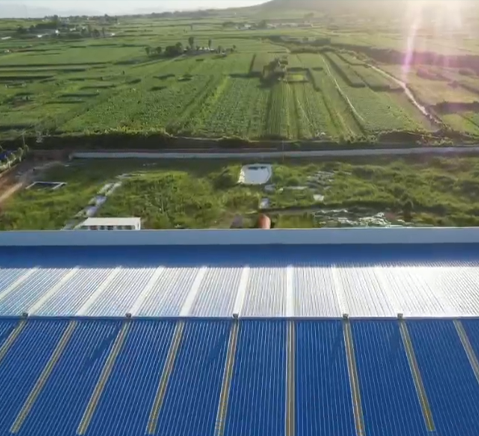8 月 . 09, 2024 00:25 Back to list
Factors Influencing the Price of Submersible Water Pumps and Their Cost Analysis
Understanding the Cost of Submersible Water Pumps
Submersible water pumps have become essential tools in various applications, from residential and agricultural uses to industrial operations and municipal systems. These pumps are designed to operate underwater, efficiently pumping water from wells, reservoirs, and even flooded areas. However, potential buyers often grapple with the question of cost What factors influence the price of submersible water pumps, and how can one potentially save money without compromising quality?
Factors Influencing the Cost
1. Type of Pump The cost of submersible pumps varies significantly based on their type. For instance, a utility submersible pump used for draining or dewatering can range from $50 to $200, while heavy-duty models designed for deeper wells or more substantial industrial applications can cost anywhere from $500 to several thousand dollars. The application and required specifications heavily dictate the type of pump needed.
2. Material and Build Quality The materials used in the manufacturing of the pump can greatly affect its price. Pumps made from high-quality stainless steel are generally more expensive but offer greater durability and resistance to corrosion, making them suitable for use in harsh environments. Conversely, pumps made from plastic or lower-grade materials may be cheaper but could wear out more quickly, leading to higher replacement costs over time.
3. Horsepower and Performance The horsepower (HP) of a submersible pump dictates its performance capabilities. Pumps with higher horsepower can move more water and handle more demanding tasks, but they also come at a higher price point. When selecting a pump, it's vital to consider not only the initial cost but also the long-term efficiency and energy consumption associated with the pump's horsepower.
4. Brand and Warranty Well-known brands often command higher prices due to their reputation for quality and reliability. Additionally, purchasing a pump with a comprehensive warranty can provide peace of mind, although these models may cost more upfront. Consumers should weigh the potential long-term savings of warranty coverage against the initial investment.
5. Installation and Maintenance Costs Buyers should also consider the costs associated with installation and maintenance. Some submersible pumps can be challenging to install and may require professional assistance, adding to the overall expense. Regular maintenance is necessary to ensure longevity and optimal performance, thus ongoing costs should be factored into the budget.
cost of submersible water pump

Strategies for Cost-Effective Purchasing
1. Research and Compare Potential buyers should thoroughly research various models and brands, comparing their features, costs, and customer reviews. Online platforms and local retailers can provide valuable information and prices.
2. Evaluate Needs Carefully Understanding the specific needs of your application is crucial. By assessing the required flow rate, depth, and application type, buyers can avoid overspending on a pump that exceeds their requirements.
3. Consider Used or Refurbished Pumps For those on a tight budget, purchasing used or refurbished submersible pumps can be a viable option. However, it is essential to ensure these pumps are in good working condition and come with some form of guarantee.
4. Seek Professional Advice Consulting with experts or professionals in the field can provide insights into the best options for specific needs and budgets. Often, they can recommend products that offer the best value for money.
Conclusion
The cost of submersible water pumps is influenced by a myriad of factors, including type, materials, performance specifications, and more. Buyers should take the time to research and evaluate their specific needs to make an informed decision. By doing so, they can find a reliable submersible pump that fits their budget without sacrificing quality or performance. This careful approach will ensure that they invest wisely in a crucial tool for their water management needs.
-
Your Guide to Deep Well Pumps
NewsOct.31,2024
-
Why Choose a Stainless Steel Deep Well Pump?
NewsOct.31,2024
-
Understanding Water-Filled Submersible Pumps
NewsOct.31,2024
-
Understanding SS Submersible Pumps
NewsOct.31,2024
-
Reliable Submersible Well Pumps for Your Water Supply Needs
NewsOct.31,2024
-
Choosing the Right Submersible Pump for Your Water Management Needs
NewsOct.31,2024
-
 Understanding Water-Filled Submersible PumpsWhen it comes to selecting the right pump for your water management needs, understanding the different types available is crucial.Detail
Understanding Water-Filled Submersible PumpsWhen it comes to selecting the right pump for your water management needs, understanding the different types available is crucial.Detail -
 Guide to Installing a Deep Well Submersible PumpWhen dealing with deep wells, a deep well submersible pump is often the most effective solution for extracting water from significant depths.Detail
Guide to Installing a Deep Well Submersible PumpWhen dealing with deep wells, a deep well submersible pump is often the most effective solution for extracting water from significant depths.Detail -
 Finding the Right Submersible PumpWhen seeking an efficient solution for pumping water from deep wells, sumps, or other applications, the submersible pump is a leading choice.Detail
Finding the Right Submersible PumpWhen seeking an efficient solution for pumping water from deep wells, sumps, or other applications, the submersible pump is a leading choice.Detail
